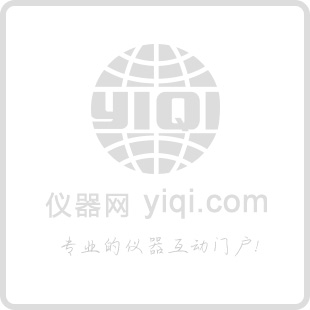NEXTERION® Glass B and Glass D
SCHOTT provides two different types of uncoated glass slides, NEXTERION
® Glass B (BOROFLOAT
® 33) and D (D263T), for customers looking to apply their own functional coatings. Both glass materials are borosilicate glasses with high chemical resistance, excellent transmission, low fluorescence, and exceptional flatness and were specially selected by SCHOTT Microarray Solutions as the optimal glass types for microarray related applications. The naturally pristine glass surfaces can be used without any additional polishing steps and all the slides are laser cut to minimize particle contamination.
NEXTERION® Glass B

Autofluorescence NEXTERION® Glass D and Glass B vs. competitors
NEXTERION® Glass B is a highly chemically resistant borosilicate glass that is produced by melting the purest raw materials. The microfloat process is used for manufacturing this glass type, resulting in a pristine, fire-polished surface that can be used without any additional polishing.
This process allows the production of glass substrates with tight geometric properties. In addition, the fluorescence is particularly low in the range of Cy3™ and Cy5™ emission wavelengths (570 nm and 670 nm), making NEXTERION® glass slides the perfect substrate solution for microarray applications.
NEXTERION® Glass D
NEXTERION® Glass D is a high quality borosilicate glass produced by melting the purest raw materials. It is manufactured by a special down-draw production process that results in fire-polished surfaces that can be used without any additional processing.
The NEXTERION® Glass D production process allows SCHOTT to offer glass substrates with extremely tight geometric properties. In addition, the fluorescence is particularly low in the range of Cy3™ and Cy5™ emission wavelengths (570 nm and 670 nm).
NEXTERION® Glass B and D specification
NEXTERION
® uncoated standard slides are manufactured to the following specifications:
- 25 mm x 75.6 mm ± 0.1 mm
- Thickness 1.0 mm ± 0.05 mm
- Plain cut edges, by using the precise laser cutting process
NEXTERION
® uncoated standard plates are manufactured to the following specifications:
- 74 mm x 110 mm ± 0.1 mm
- Thickness 1.0 mm ± 0.05 mm
- Plain cut edges, by using the precise laser cutting process
Detailed information about Glass B flatness
The slides are available with or without a barcode (code 128).
Customized features for particular applications are available upon request and include slide orientation marks, non-standard barcodes, customized barcode numbering, company logos, etc. Please enquire for further information.

Laser cutting
| Properties |
NEXTERION® Glass B
(BOROFLOAT® 33) |
NEXTERION® Glass D
(D263T) |
Mechanical
• Density ρ in g/cm3 |
2.2 |
2.51 |
Optical
• Refractive indices
ne (λ = 546.1 nm)
nd (λ = 587.6 nm)
• Dispersion (nF – nC)
• Abbe value (νe)
• Luminous transmittance (τvD65)
(Glass thickness 1.1 mm)
• Stress optical coefficient C in 1.02 x 10-12 m²/N |
1.47311
1.47140
71.9 x 10–4
65.41
92.7%
4.0 |
1.5255
1.5231
96.0 x 10–4
55
91.7%±0.3%
3.4 |
Chemical
• Hydrolytic resistance(ISO 719/DIN 12 111)
• Acid resistance(ISO 1776/DIN 12 116)
• Alkali resistance(ISO 695/DIN 52 322) |
HGB 1
1
A 2 |
HGB 1
2
A 2 |
Thermal
• Linear thermal coefficient of expansion
α (20 – 300 °C/68 – 572 °F)
• Transformation temperature Tg |
3.25 x 10-6/K
525°C |
7.2 x 10-6/K
557°C |
The properties detailed above were calculated using the very latest standards and measuring methods. SCHOTT reserves the right to change the data in keeping with the latest technical standards. Numerical values stated without tolerances are reference values of an average production quality.
All data is intended to be used as a guideline, unless otherwise stated. Please contact us if you require further information.
Cleaning
We offer all of our substrates exclusively cleanroom cleaned. The cleaning process is conducted in an automated ultrasonic cleaning line using multiple wash steps of varying pH's, rinse steps and final drying stage. Afterwards, the substrates are packed up in plastic storage boxes which are sealed in air-tight laminated foil pouches under inert Argon atmosphere. The whole process is certified with Class 100 clean room. The glass may be used without any additional cleaning step.

Automated ultrasonic cleaning of slides
 可做表面修饰 无涂层 生物芯片 玻璃基片
可做表面修饰 无涂层 生物芯片 玻璃基片
 生物芯片分析器 Gold Chip 生物芯片分析器 Gold Chip
生物芯片分析器 Gold Chip 生物芯片分析器 Gold Chip
 2100 Agilent 2100生物芯片分析系统
2100 Agilent 2100生物芯片分析系统
 生物芯片分析器 SPR i 生物芯片分析器 SPR i
生物芯片分析器 SPR i 生物芯片分析器 SPR i
 生物芯片分析器 Accesorry 生物芯片分析器 Accesorry
生物芯片分析器 Accesorry 生物芯片分析器 Accesorry
 K-MAC-SPR i 生物芯片分析仪(图)
K-MAC-SPR i 生物芯片分析仪(图)
 C-MAK-SPR LAB 生物芯片分析仪(图)
C-MAK-SPR LAB 生物芯片分析仪(图)
 组织芯片制备仪,生物芯片制备/不生锈
组织芯片制备仪,生物芯片制备/不生锈
 GH/Scientz-05 芯片恒温杂交仪 生物芯片杂交仪
GH/Scientz-05 芯片恒温杂交仪 生物芯片杂交仪
 iONE生物芯片点样仪(德国M24U产品)
iONE生物芯片点样仪(德国M24U产品)
 生物芯片荧光扫读仪/长春博盛量子科技有限公司
生物芯片荧光扫读仪/长春博盛量子科技有限公司
 安捷伦Agilent 2100生物芯片分析系统-南京欧捷仪器
安捷伦Agilent 2100生物芯片分析系统-南京欧捷仪器